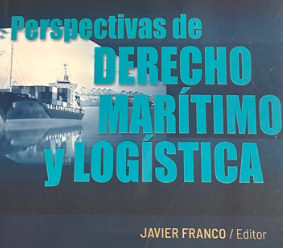Informe del Foro Económico Mundial (analiza los efectos de las cadenas de valor mundiales en el comercio y el desarrollo)
En un informe publicado por el Foro Económico Mundial en junio de 2012 se analizan las repercusiones de la geografía cambiante de las cadenas de valor mundiales desde la perspectiva del comercio y el desarrollo y se exponen consecuencias para los países en desarrollo y para las políticas comerciales. El informe fue elaborado por el Consejo de la Agenda Mundial sobre el Sistema Mundial de Comercio, que cuenta entre sus miembros con el Sr. Alejando Jara, Director General Adjunto de la OMC.
Se señala en el informe que la globalización ha fomentado la convergencia y la integración económicas. Para beneficiarse de esas tendencias, los países deben actuar resueltamente y reformar la política comercial en tres niveles: el unilateral, el multilateral y el de los acuerdos comerciales preferenciales. Si, en respuesta a la crisis económica, se cae en la tentación de volver al proteccionismo, las consecuencias para la economía mundial, serían graves en particular, para los países en desarrollo que más dependen del comercio. Ello pone de relieve el papel fundamental de la OMC en los esfuerzos por unificar las reglas del juego.
Contents; 2 Acronyms; 2 List of Members; 3 Tables and Figures; 4 Summary and Recommendations; 4 Introduction; 6 Summary; 8 Implications for developing countries and trade rules; 10 China and the Global Supply Chain in Historical Perspective; 10 Rise of Western Industrialism; 11 The Soviet Production System; 11 Japan’s Economic “Miracle”; 12 The NIEs – Korean and Taiwanese divergent paths; 12 Japan’s Sun Sets as China’s Sun Rises – A Lesson in Predictions; 13 Made in China; 15 What next for the GSC?; 16 Global Manufacturing Value Chains and Trade Rules; 17 Transformation of trade and industry; 17 Implications for trade policy and businesses’ interests in the world trade system; 18 Services and Global Value Chains; 18 Services as “Enablers” of Value Chains in Goods; 19 Services Value Added and World Trade Flows; 20 Services, Logistics Performance, Trade and Value Chains; 21 Shifting to a High Value-added, Globally Integrated Services Economy; 22 The Creation of Services Value Chains; 23 Important Factors for the Creation of Services Value Chains; 23 Implications of the Growth of Services Value Chains; 24 Case-study 1: General Electric Corporation – Advanced Manufacturing in Perspective; 24 Manufacturing, Servicing and Innovating Globally; 25 Key Factors Shaping Value Chain Decisions; 26 “Right-sourcing” Production and Innovation; 27 Case-study 2: Socota Group – Sub-Saharan Africa in the Global Apparel Value Chain; 27 Synthetic overview of the world market; 28 The long-term competitiveness of sub-Saharan Africa; 29 Company insight: Socota Madagascar; 30 Governance and investing in development at scale; 31 Broader Implications of the Growing Trade in Intermediates; 31 1. The Importance of Bilateral Trade Balances Is Exaggerated; 31 2. The Importance of Exports as a Driver of Demand is Overestimated, while the Importance of Trade as a Source of Efficiency is Underestimated; 32 3. Trade Has Become More Volatile and a Larger Source of Shocks; 33 4. The Cost of Protection is Higher; 34 References
35 Endnotes
Summary and Recommendations
Peter Draper, Uri Dadush, Gary Hufbauer, James Bacchus, and Robert Lawrence1
Introduction
Two broad, contradictory trends are at work in the global economy. First, economic globalization through multinational corporation (MNC) production networks continues apace. This promotes global economic convergence and integration. The global value chains they operate have become the world economy’s backbone and central nervous system.
However, the second trend pertaining to economic crisis policy responses is one of divergence. Associated with this is the ever-present threat of a destructive spiral of protectionism and consequent disintegration. That would have serious consequences for the global economy, particularly the most vulnerable and trade-dependent states. This highlights the critical role the World Trade Organization (WTO) has played in stemming the tide of protectionism. Unfortunately, WTO member states remain unable to conclude the Doha Development Round, throwing the WTO’s continued centrality to the global trading system into sharp relief. Fortunately, the resilience and increased interdependence of the global economy also played a key role in containing protectionism: governments quickly realized the futility of discriminatory stimuli and the cost of raising barriers on intermediate goods on which whole segments of domestic industries depend. 2
The increasing importance of global production chains is reflected in the rising trade in intermediate inputs, which now represent more than half of the goods imported by OECD economies and close to three-fourths of the imports of large developing economies, such as China and Brazil.3 Imported inputs also account for a significant chunk of exports, blurring the line between exports and imports as well as between domestic products and imports. As part of global production chains, products at different stages of value added may be imported and re-exported multiple times, increasing the size of reported exports and imports relative to global and national value added. In advanced countries, this effect is reinforced by the fact that imports can contain a significant portion of inputs – including intellectual property, brand-development, etc. – originally sourced at home; in developing countries, imports of components and machines are crucial vehicles for absorption of technologies.
According to OECD estimates, imported intermediate input content accounts for about one-quarter of OECD economies’ exports, and the European Central Bank (ECB) estimates that such imports accounted for about 44 percent of EU exports (or 20 percent for imports from outside of the EU) in 2000, ranging from about 35 percent in Italy to about 59 percent in the Netherlands.4 In the United States, imported intermediate input content in exports reached about 10 percent in 2005. Among emerging economies, imported content’s share in exports is particularly high in China – about 30 percent, or twice that for India and Brazil.
Import content of Exports (%)0%!10%!20%!30%!40%!50%!60%!70%!United States!India!Brazil!Japan!Indonesia!United Kingdom!Chile!Turkey!France!Germany!China!Italy!Spain!Korea!Estonia!Hungary!Luxembourg!1995!2005!
Source: OECD Input-Output Database5
The Shifting Geography of Global Value Chains: Implications for Developing Countries and Trade Policy
Summary and Recommendations
With globalization, the use of imported intermediates for exports has been growing. According to the OECD, all but one of its 34 member countries increased the import content of its exports over 1995–2005. The increase was particularly marked in small countries like Luxemburg and Israel, which saw increases of about 20 percentage points, compared to 3–8 percentage point increases in large countries, such as the United States, Japan, and Germany. This is in keeping with the general trend of import content accounting for a larger share of exports in smaller economies.
But fundamental changes to global value chains are afoot. In the next decade the underlying cost structures driving value chain location could change dramatically. At least five drivers are evident:
1. Energy and associated transportation costs are likely to continue rising as the cost of fossil fuels increases and policy measures targeted at carbon emissions intensify. The fracas over airlines associated with the EU’s emissions trading scheme is an early harbinger of the kinds of issues that may arise. Related to these pressures is the danger of growing trade protectionism. Collectively these cost pressures promote reductions in the ‘length’ of value chains.
2. Similarly, as new players from emerging markets secure access to various resources for input into production processes, so competition will increase and prices of those resources are likely to rise. Export restrictions designed to secure domestic supplies of key industrial inputs, if not properly regulated through the WTO, are also likely to intensify placing further upward pressure on prices.
3. China is at the centre of global value chains in manufacturing, particularly in labour-intensive sectors. But as China continues to shift its growth model away from reliance on exports towards domestic consumption, so wage costs are likely to rise sharply and the currency should continue its appreciation. Other domestic costs, such as land, are also rising. Hence the ‘China cost’ is likely to continue mounting. By contrast, Chinese productivity growth is amazing, and the western provinces have hundreds of millions of workers eager to join the ‘new China’, so some caution is appropriate in predicting sharp changes.
4. Information technology costs are likely to be driven lower through intense technological competition. Information technology promotes just-in-time and flexible production processes, critical elements of value chain operations, and enables coordination of dispersed activities. This opens up opportunities for countries wishing to grab a slice of the value chains action.
5. Southern markets will continue to grow in relative importance, while growth in Europe is likely to remain structurally repressed for the foreseeable future. This is likely to drive value chain reorientation and relocation, potentially in unpredictable ways.
Therefore the geography of value chain location is likely to shift, potentially fundamentally, within the next decade. This has major implications for those countries that have specialised in value chain niches, and for developing countries looking to secure new niches. This will play out differently in different contexts: developed countries are increasingly concerned about retaining jobs; some developing countries are looking to retain their existing value chain niches while others are looking to plug into them.
These dynamics will drive unilateral trade policy responses centered on promoting competitiveness, efficiency, and attractiveness to value chain investments. Related to this, the international rules governing value chain operations need to be revisited with a view to updating them so that the new emerging context can evolve optimally. Those rules apply at two levels: the regional level through preferential trade agreements (PTAs), and the multilateral level under the WTO.
Consequently our Council decided to consider these matters in more detail; this report contains our efforts. In the next section we summarise the main contributions; then we provide some overall recommendations.6 ..
he Shifting Geography of Global Value Chains: Implications for Developing Countries and Trade Policy
Summary and Recommendations
Summary
Jean-Pierre Lehmann reviews the main historical shifts in industrial location beginning with the industrial revolution in Britain; subsequently incorporating Western Europe, particularly Germany; and later the United States (US), which developed ‘American management’ based on ‘scientific’ techniques. An alternative tradition based on a different ‘scientific management’ paradigm developed in the Soviet Union, but ultimately failed owing to the many shortcomings of command economics. Subsequently Japan perfected its ‘compete out/protect in’ model centered on giant keiretsu rather than value chain dispersion through arms length relationships. South Korean chaebol then adopted the Japanese ‘compete out/protect in’ model, with the significant exception being their ongoing sourcing of parts and components from outside the chaebol, particularly from Japan. Taiwan, by contrast, developed its industrial structure from the bottom up on the basis of small and medium enterprises supplying parts and components to large corporate OEM manufacturers from Europe and the US as the ‘process trade’ expanded into East Asia. As labour costs in South Korea and Taiwan rose so they too shifted production within the region and China became the latest and most significant beneficiary.
Richard Baldwin unpacks the dynamics underpinning the emergence of global value chains in recent decades. What he calls the ‘first great unbundling’ took place in the nineteenth century as steam power drove innovations in shipping and railroads thereby radically lowering transportation costs. That enabled the spatial separation of production and consumption, while scale economies and comparative advantage promoted the unbundling process. Thus goods were made in one country and shipped to consumers in another. Accordingly, economic policies and trade rules were designed on the basis of national perspectives, in a world of ‘selling’ goods.
The first unbundling required on-site coordination of production and distribution. The 1980s information and communications technology (ICT) revolution promoted decentralization of information flows and therefore the ‘second great unbundling’, whereby production stages were dispersed to geographically distinct locations thereby harnessing comparative advantage and scale economies. This process gave rise to ‘21st century trade’, or the trade-investment nexus. That nexus encompasses trade in parts and components; international investment in production facilities and associated material and non-material inputs; and strong demand for a range of services to coordinate dispersed production processes. This enabled firms to combine their high technology with foreign workers.
China typifies these forces par excellence. Lehmann notes that China’s success in global value chains is rooted in the ICT revolution, which greatly promoted production dispersion and undercut tight vertical control as exercised by Japan’s industrial keiretsu, while simultaneously a global market emerged for the first time as the communist bloc collapsed and developing countries pursued unilateral trade liberalization. He argues that China’s success resembled the Taiwanese model rather than Japan’s; with a key difference being its embrace of foreign direct investment (FDI) in order to pursue ‘compressed development’ at a rapid pace.
However, he reminds us that nothing is pre-ordained. Japanese manufacturing bestrode the globe in the 1980s, as had the Europeans and the US previously, before relative decline set in (excepting Germany). In this light he notes several challenges ahead for China. First, external market dynamism is repressed in the wake of the global financial crisis – a major problem for China’s export-led model. Second, the docile rural-sourced labour force that fuelled the initial wave of industrialization is giving way to a younger urban labour force with higher expectations. Third, there is great desire in the leadership to promote more value addition in China and thus to alter the terms of the ‘compressed development’ model. These pressures are captured in the 12th Five Year Plan, the outcome of which remains to be seen.
Sherry Stephenson focuses on the services dimension of global value chains. She demonstrates that services are the “enablers” and provide the link at each point of the manufacturing value chain without which they could not function. These commercial services have been the fastest growing component of services trade; they are collectively constituted by a variety of critical activities including communications services, insurance and financial services, computer and information services and business services, among others. More open services markets allow for more efficient or higher quality distribution and logistics services, thus enabling greater participation in global value chains and world trade. Similarly, better functioning infrastructure services, such as transport, reduce the average times needed to import and export thereby reducing costs while promoting efficiency and reliability. Furthermore, a key objective for MNCs is to shift from manufacture and assembly into design, innovation, R&D, logistics, marketing and branding. Hence intangible things are becoming increasingly important in global value chains.
Stephenson notes further that services themselves are being unbundled and traded as ‘tasks’. The archetypal examples are back-office and data processing services, but other services such as banking and research are also being unbundled, with the various tasks traded across national borders. Developing countries wishing to capture a share of services value chains may find it easier to capture one or more tasks in the services value chain, rather than attempt to compete along the entire spectrum.
As with manufacturing value chains, Stephenson notes that the key challenge for MNCs is to move up the services value chain. This requires strong human capital and electronic infrastructure. It also requires open trade and investment policies to promote competitive neutrality in the provision of such services. Regulatory simplicity and efficiency, key components of a good governance paradigm, are essential, as well as open markets for cross-border trade and investment flows. And regulatory modal neutrality, allowing MNCs to switch freely between modes of supplying services and to combine them when necessary in response to price and cost incentives is a key enabler. All this needs to be underpinned by quality institutions, which in turn affect the regulatory environment.
In the first company case study Karan Bhatia shows that a giant manufacturing MNC also depends on services inputs. He describes General Electric’s global web of research centres, through which ‘globally integrated innovation’ is pursued in a 24-hour production cycle made possible through advanced ICT linkages. General Electric also has to provide maintenance and other services to its huge global network. 7
The Shifting Geography of Global Value Chains: Implications for Developing Countries and Trade Policy
Ver en extenso: http://www3.weforum.org/docs/WEF_GAC_GlobalTradeSystem_Report_2012.pdf




















